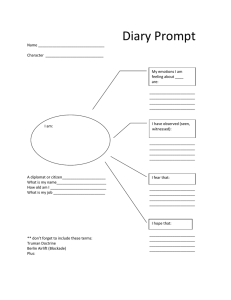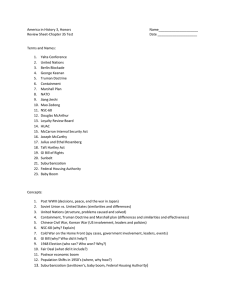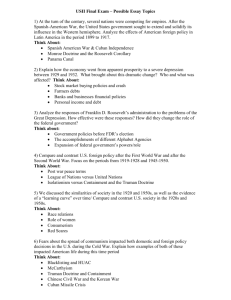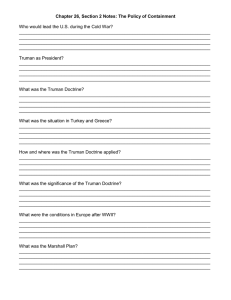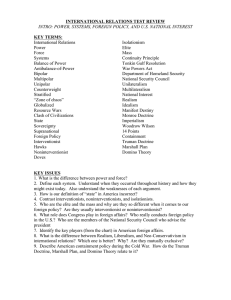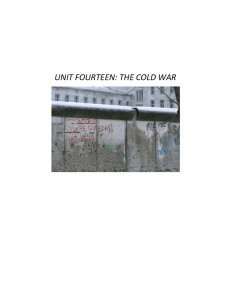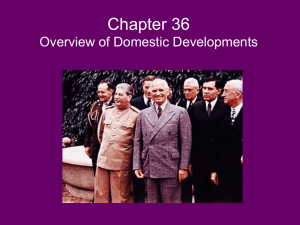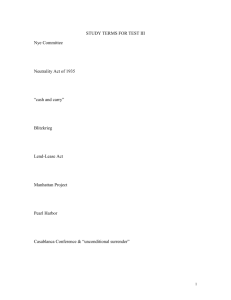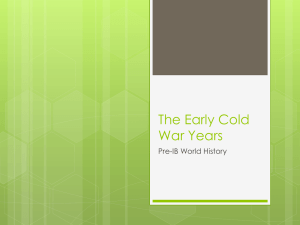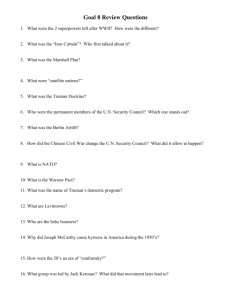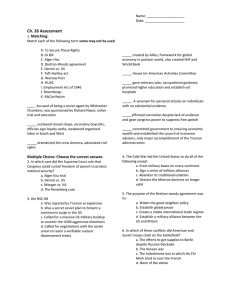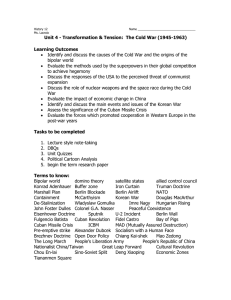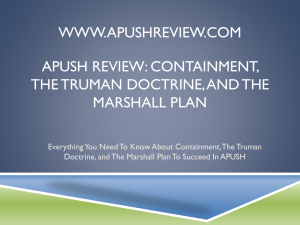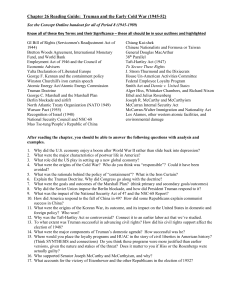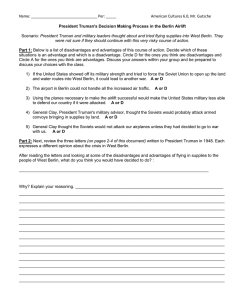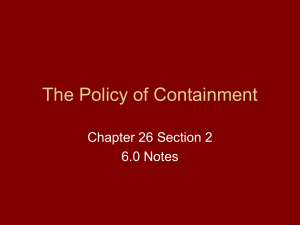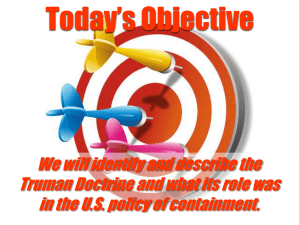World War II - John Bowne High School
advertisement
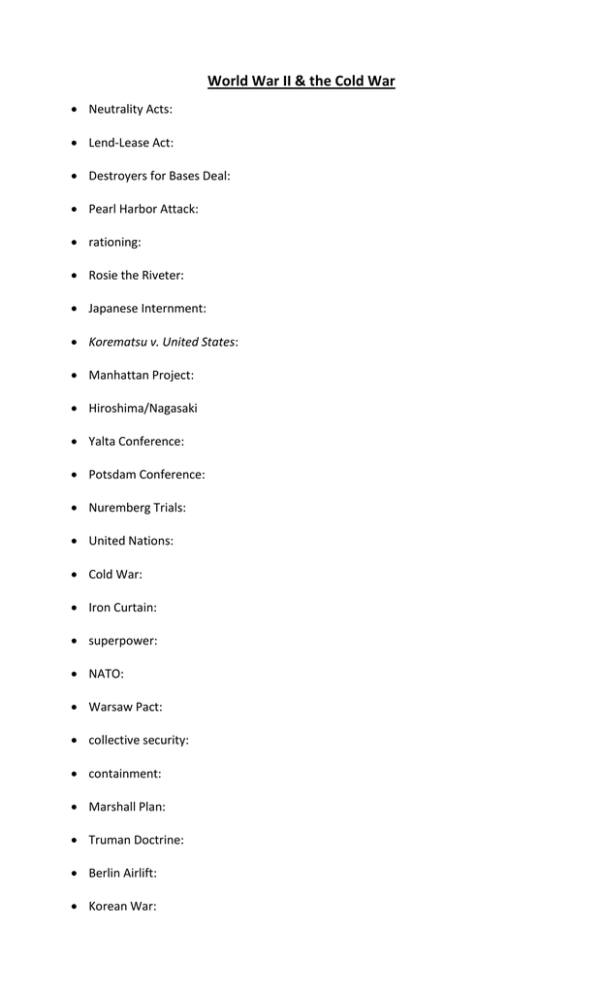
World War II & the Cold War Neutrality Acts: Lend-Lease Act: Destroyers for Bases Deal: Pearl Harbor Attack: rationing: Rosie the Riveter: Japanese Internment: Korematsu v. United States: Manhattan Project: Hiroshima/Nagasaki Yalta Conference: Potsdam Conference: Nuremberg Trials: United Nations: Cold War: Iron Curtain: superpower: NATO: Warsaw Pact: collective security: containment: Marshall Plan: Truman Doctrine: Berlin Airlift: Korean War: Sputnik: arms race: Eisenhower Doctrine: Fair Deal: Suburbanization: G.I. Bill: Baby Boom: Peace Corps: Bay of Pigs Invasion: Cuban Missile Crisis: Fidel Castro: Nikita Khrushchev: WWII Questions 1. What moves did the U.S. government make toward isolationism in the years following World War I? 2. How did the following actions aide the Allies before the U.S. entered WWII? a. The Lend-Lease Act: b. The Destroyers for Bases Deal: 3. Why did the United States eventually enter World War II? 4. Why did the federal government decide to relocate many JapaneseAmericans to internment camps? 5. Explain the majority opinion in the Supreme Court case Korematsu v. United States. 6. How did the American economy change during World War II? 7. What social changes did World War II bring to the following groups: a. Women: b. African-Americans: 8. How did the government ensure wide public support for the war effort? 9. What reasons did President Truman give for dropping atomic bombs on Japan? Cold War Questions 1. What was the Cold War? What factors contributed to its beginning? 2. Why did the United States adopt the policy of “containment” after World War II? 3. Explain how the following actions were examples of containment: a. The Truman Doctrine: b. The Berlin Airlift: c. The Marshall Plan: d. The Formation of NATO: 4. Why did the U.S. get involved in the Korean War? What was the result of the war? 5. Why did the U.S. engage in a nuclear arms race to the point of “overkill?” 6. How did the following events influence relations between the U.S. and the Soviet Union? a. Sputnik: b. The U-2 Crisis: c. The Erection of the Berlin Wall: d. The Suez Crisis: 7. What was the “Eisenhower Doctrine?” 8. How did the following events illustrate the Red Scare of the 1950s? a. The Trial of the Rosenbergs: b. HUAC: c. Watkins v. United States (1957): d. “McCarthyism”: 9. How did the American economy change after World War II? 10. What did the G.I. Bill do? 11. What factors promoted suburbanization in the postwar period? 12. Describe Truman’s Fair Deal agenda? 13. How did society’s expectations for American women change in the 1950s? 14. What was the purpose of the Peace Corps and the Alliance for Progress? 15. What was the “Bay of Pigs Invasion?” 16. Describe the agreement that brought an end to the Cuban Missile Crisis?
